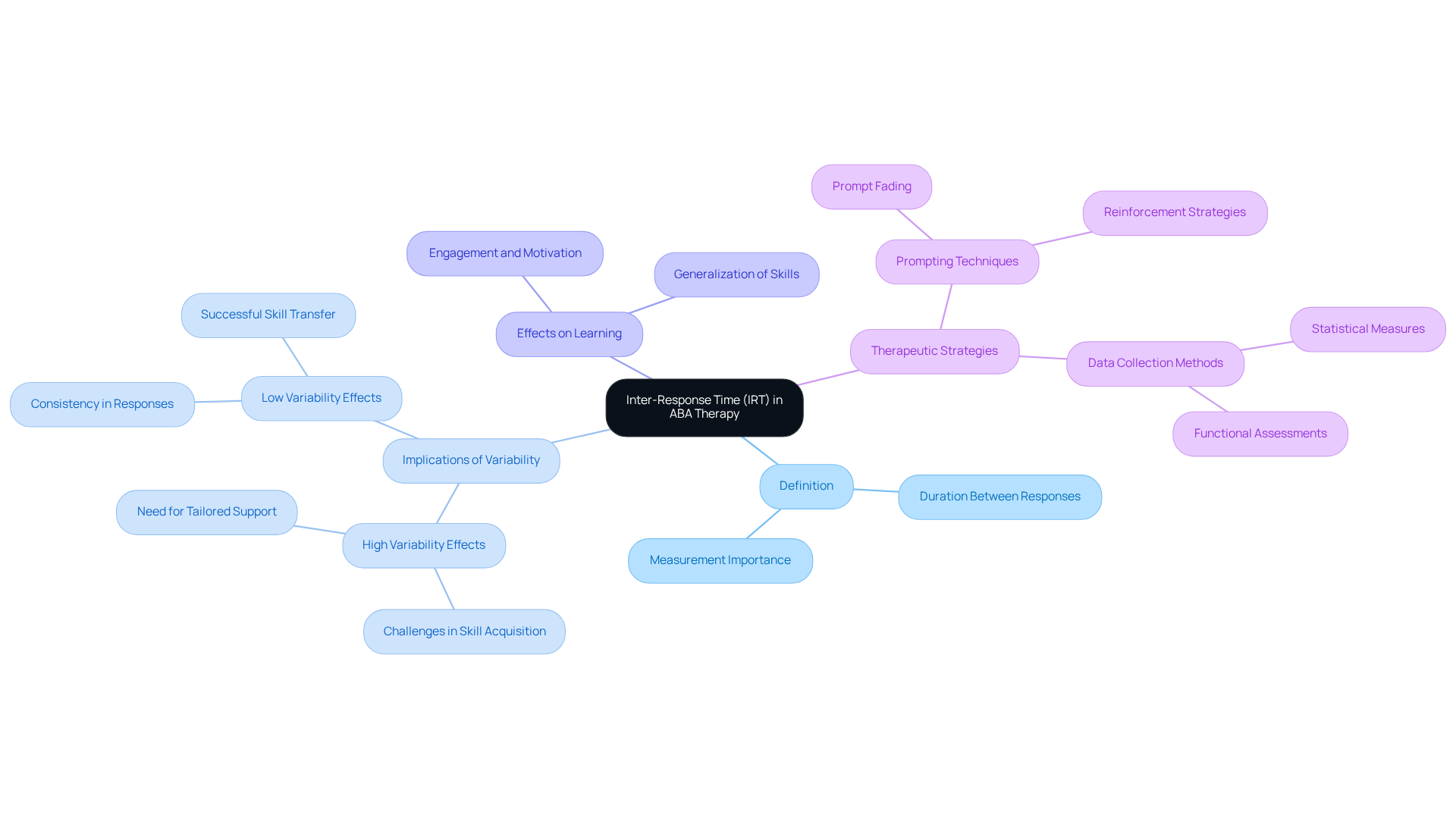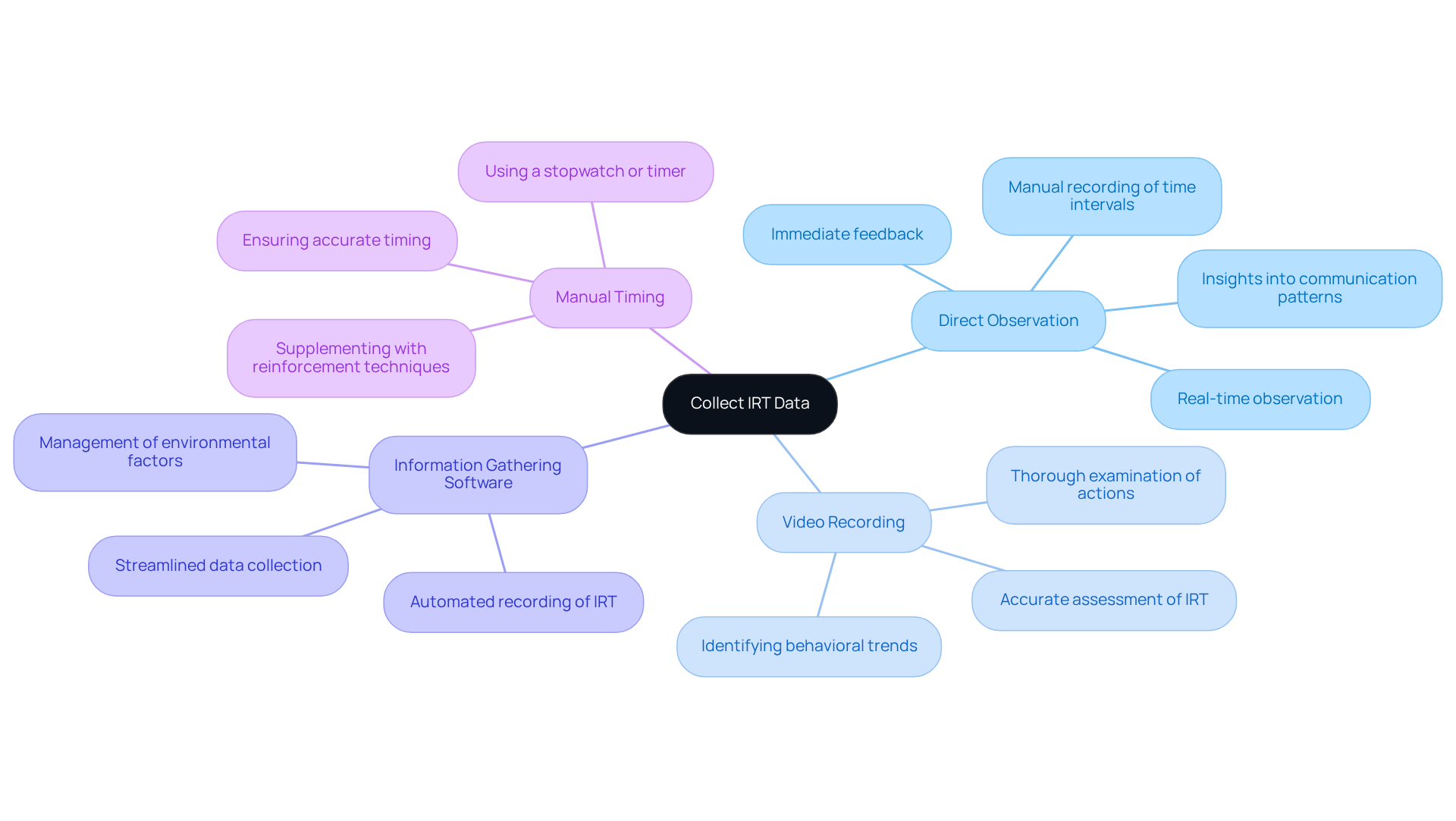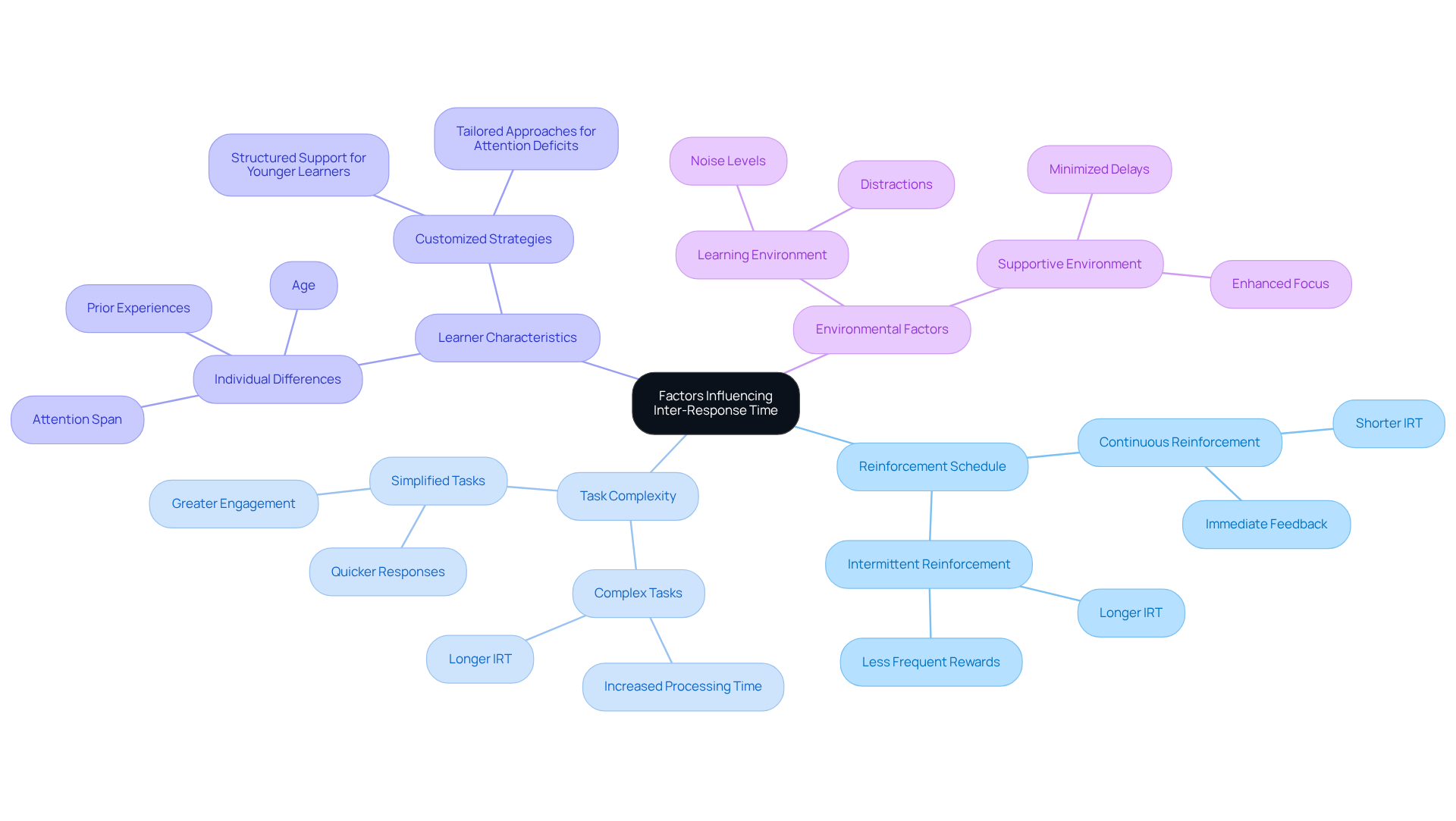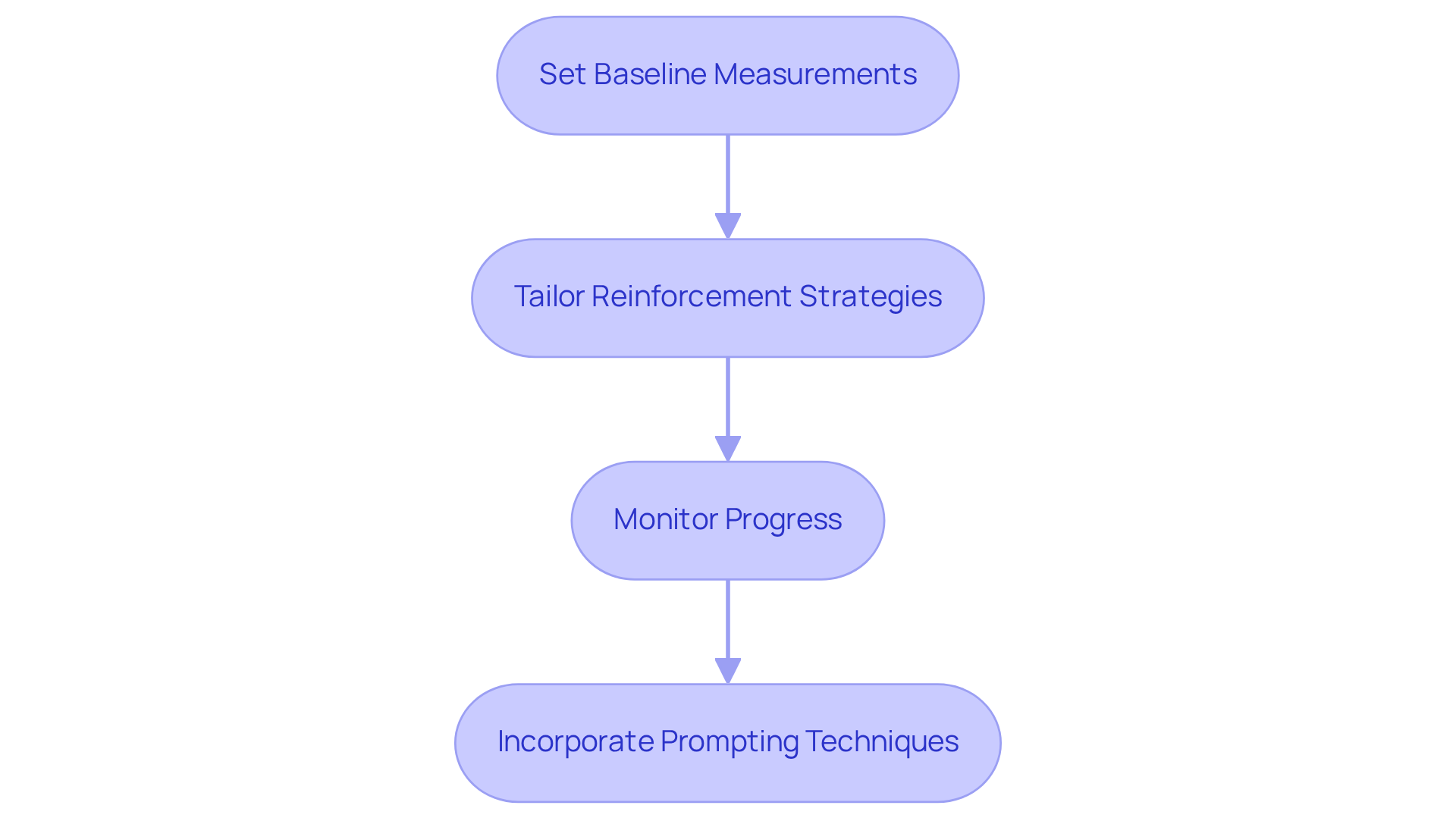September 3, 2025

Mastering Inter-Response Time (IRT) in ABA therapy is not just beneficial; it is essential for enhancing the effectiveness of interventions and understanding behavioral patterns. By systematically measuring IRT, practitioners can tailor strategies based on individual responses. This approach allows for the monitoring of progress and informed adjustments, ultimately leading to improved skill acquisition and behavior change. Are you ready to elevate your practice? Embrace IRT measurement to unlock the full potential of your interventions.
Mastering Inter-Response Time (IRT) in Applied Behavior Analysis (ABA) therapy is crucial for unlocking substantial improvements in therapeutic outcomes. Understanding the nuances of IRT—the interval between two responses—provides practitioners with critical insights into a learner's engagement, motivation, and overall progress.
However, effectively measuring and analyzing these time intervals presents a challenge, as various factors can influence IRT, ranging from task complexity to environmental distractions.
How can behavior analysts leverage this powerful metric to tailor interventions and enhance learning experiences?
The interresponse time aba in Applied Behavior Analysis (ABA) denotes the duration between two consecutive responses emitted by an individual. This measurement is crucial for , providing insights into how swiftly a person can react following a prior action. For instance, when a child raises their hand in class, the IRT represents the time interval from the first hand raise to the second. Evaluating the interresponse time aba is essential for assessing the effectiveness of strategies and understanding behavioral patterns, as it can reveal levels of engagement, motivation, and learning progress within therapeutic settings.
High variability in IRT may indicate challenges in skill acquisition, necessitating tailored support strategies. On the other hand, a decrease in IRT variability typically signifies enhanced consistency and efficiency in actions, underscoring successful skill transfer to real-life situations. By systematically measuring interresponse time aba, behavior analysts are empowered to make informed decisions regarding targets and strategies, ultimately enhancing the overall effectiveness of ABA therapy.

To effectively collect , practitioners can employ several methods that enhance the accuracy and reliability of their assessments.
By integrating these methods and considering factors such as antecedent variables and reinforcement strategies, behavior analysts can significantly enhance their data collection practices. This leads to more informed decision-making and improved outcomes in ABA therapy.

Several factors can significantly influence the interresponse time aba in ABA therapy.

To effectively apply Inter-Response Time (IRT) in intervention strategies, practitioners must consider several critical approaches:

Assessing and modifying strategies based on interresponse time ABA information is essential for effective ABA therapy. Regularly reviewing interresponse time ABA information allows practitioners to identify trends and patterns that may necessitate adjustments in interventions. This ongoing analysis is vital for and ensuring alignment with individual goals.
Furthermore, establishing feedback loops encourages open communication between practitioners and clients. Engaging in regular discussions about progress and challenges related to IRT fosters a collaborative approach to behavior modification. This not only enhances the therapeutic relationship but also improves outcomes. The active involvement of clients and families in decision-making promotes collaboration within ABA therapy.
Flexibility in adapting strategies based on interresponse time ABA data is crucial. If specific actions fail to yield the desired outcomes, it is imperative to consider alternative approaches or additional assistance. Such adaptability is vital for addressing the unique needs of each individual. Optimizing interresponse time ABA can lead to improved skill acquisition and behavior change, as evidenced by numerous case studies.
Moreover, maintaining detailed records of any modifications made based on interresponse time ABA analysis is critical. This documentation enables the monitoring of changes over time, facilitating the enhancement of future strategies. Continuous data collection is essential for tracking progress and assessing the effectiveness of interventions.
By prioritizing these practices, behavior analysts can significantly enhance the efficacy of ABA therapy, resulting in improved skill acquisition and behavior change for individuals receiving support.

Mastering Inter-Response Time (IRT) in ABA therapy is crucial for achieving meaningful outcomes in behavior modification. Understanding and measuring the time intervals between responses allows practitioners to gain valuable insights into an individual's engagement, motivation, and learning progress. This knowledge informs strategy selection and enhances the overall efficacy of interventions aimed at fostering skill acquisition and behavioral change.
Throughout this discussion, key aspects of IRT have been explored, including its definition, methods for data collection, and the various factors influencing response times. Techniques such as direct observation, video recording, and specialized software are essential tools for gathering accurate IRT data. Moreover, the impact of reinforcement schedules, task complexity, learner characteristics, and environmental factors on IRT emphasizes the need for tailored approaches in therapy.
Ultimately, the effective application of IRT in intervention strategies is vital for optimizing outcomes in ABA therapy. By continuously evaluating and adjusting based on IRT data, practitioners can ensure that interventions respond to individual needs. This adaptability promotes better engagement and faster skill acquisition while reinforcing the collaborative nature of the therapeutic process. Embracing the principles of IRT can lead to significant advancements in behavior modification, underscoring its importance in the realm of Applied Behavior Analysis.
What is inter-response time (IRT) in ABA therapy?
Inter-response time (IRT) in Applied Behavior Analysis (ABA) refers to the duration between two consecutive responses emitted by an individual. It helps in understanding how quickly a person can react following a prior action.
Why is measuring IRT important in ABA therapy?
Measuring IRT is crucial for assessing the effectiveness of strategies and understanding behavioral patterns. It can provide insights into levels of engagement, motivation, and learning progress within therapeutic settings.
What does high variability in IRT indicate?
High variability in IRT may indicate challenges in skill acquisition, suggesting the need for tailored support strategies to assist the individual.
What does a decrease in IRT variability signify?
A decrease in IRT variability typically signifies enhanced consistency and efficiency in actions, indicating successful skill transfer to real-life situations.
What methods can practitioners use to collect IRT data?
Practitioners can use several methods to collect IRT data, including direct observation, video recording, information gathering software, and manual timing.
How does direct observation help in collecting IRT data?
Direct observation involves real-time monitoring of the individual, allowing practitioners to manually record time intervals between responses, which facilitates immediate feedback and timely adjustments to interventions.
What advantages does video recording offer for IRT data collection?
Video recording allows for a thorough examination of actions over time, enabling accurate assessment of IRT and insights into behavioral patterns that may not be apparent during live observation.
How does information gathering software assist in IRT data collection?
Specialized software for ABA can automate the recording of IRT, streamlining the data collection process and helping practitioners monitor and analyze data across multiple sessions.
What is manual timing and how is it used in IRT data collection?
Manual timing involves using a stopwatch or timer to measure IRT in controlled settings. Practitioners must ensure accurate timing by precisely starting and stopping the timer to maintain data integrity.
How can practitioners enhance their data collection practices in ABA therapy?
By integrating various methods and considering factors such as antecedent variables and reinforcement strategies, behavior analysts can significantly improve their data collection practices, leading to more informed decision-making and better outcomes in ABA therapy.
Our expert recruitment strategies and AI-driven sourcing ensure that you receive top-notch candidates quickly, without compromising on quality. Whether you’re looking for BCBAs, Clinical Directors, or RBTs, we’ve got you covered.